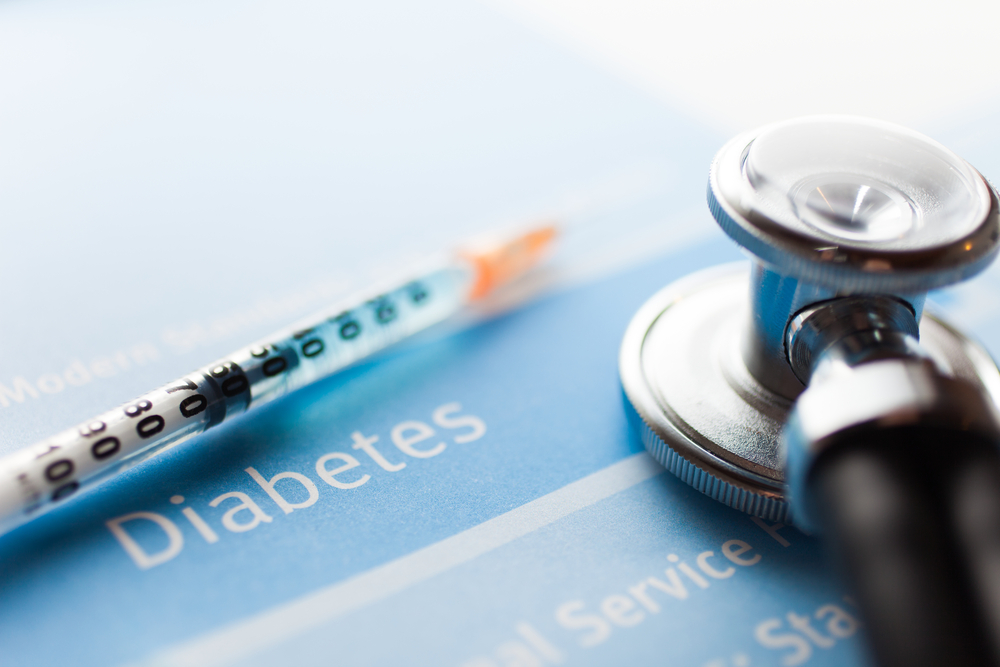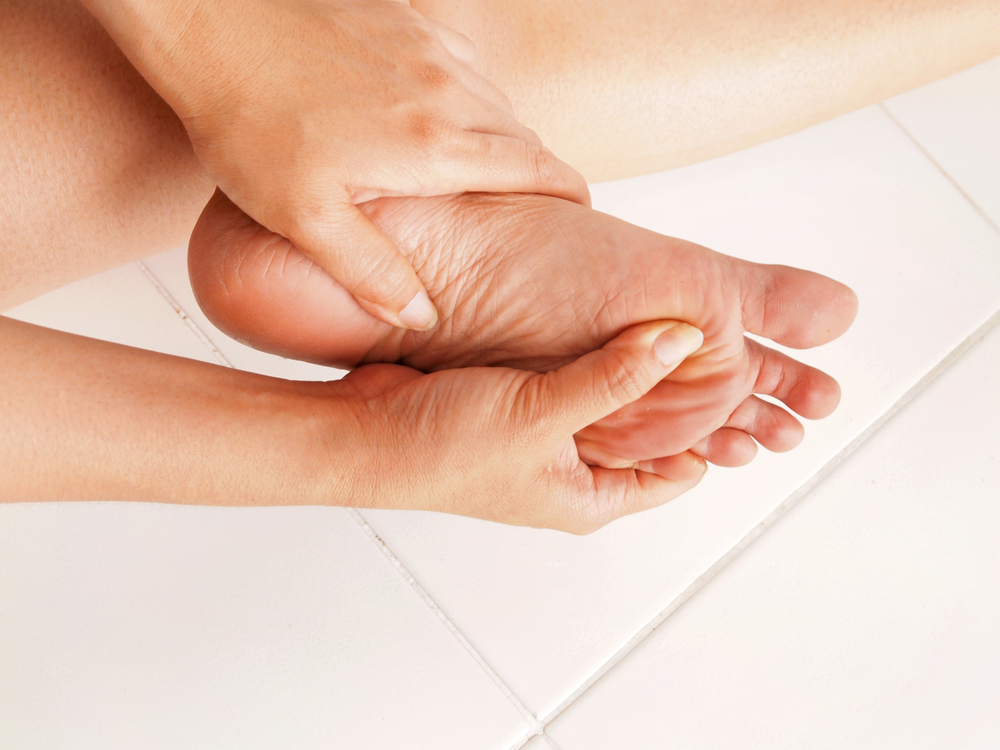Contents:
- Medical Video: Diagnosis and Evaluation of COPD
- COPD symptoms commonly found
- Chronic cough
- Wheezing
- Shortness of breath (dyspnea)
- Fatigue
- Often suffer from respiratory infections
- Weight loss
- Symptoms of Advanced COPD
- Get to know the stages of COPD
- Stage 1
- Stage 2
- Stage 3
- Stage 4
- Spirometer for diagnosing COPD
- FEV1 / FVC ratio in COPD patients according to the stages
Medical Video: Diagnosis and Evaluation of COPD
The symptoms of COPD aka chronic obstructive pulmonary disease can vary greatly depending on the amount of damage to the lungs. The symptoms are even sometimes vague with other common ailments so you don't realize it until the disease gets worse. What are the symptoms?
COPD symptoms commonly found
COPD aka chronic obstructive pulmonary disease, according to WHO, is a life-threatening lung disease that interferes with normal breathing. About more than 3 million people died from COPD in 2012, which is comparable to 6% of all deaths globally that year. More than 90% of COPD deaths occur in low and middle income countries, including Indonesia. Knowing the symptoms of COPD early can help you prevent more severe damage to your body.
Chronic cough
One of the common symptoms of COPD is coughing. Coughing is the way the body cleanses the airways, mucus / phlegm in the lungs, other irritants, and also secretions. Mucus is usually clear; however, in patients with COPD, mucus can be yellow. Coughing is often very severe in the morning and you can cough more while exercising or smoking. Coughing can be stubborn every day, even though there are no symptoms of other diseases such as colds or flu.
Wheezing
When you exhale through narrow or blocked airways, you will often hear a sound like a whistle called wheezing. In patients with COPD, wheezing is most often caused by excess mucus that blocks the airways. Wheezing does not always mean that you have COPD. Wheezing is also a symptom of asthma and pneumonia.
Shortness of breath (dyspnea)
As the airways in your lungs become inflamed, damaged, and begin to narrow, you can have difficulty breathing or breathing. The symptoms of COPD can be evident during increased physical activity. These symptoms can make daily activity routines, such as walking, doing simple homework, changing clothes, or taking a shower, more difficult. At worst, shortness of breath can occur even when you are resting.
Fatigue
If you experience difficulty breathing, you cannot get enough oxygen for your blood and muscles. Without the oxygen needed, bodily functions will slow down and fatigue will occur. You can also get tired because your lungs work harder to supply oxygen and remove carbon dioxide, so you run out of energy.
Often suffer from respiratory infections
Because people with chronic obstructive pulmonary disease or COPD have difficulty cleaning the lungs from bacteria, viruses, pollutants, dust, and other substances that cause inflammation, they are at a higher risk of lung infections, such as colds, flu, and pneumonia.
For patients with COPD, avoiding the risk of respiratory infections is certainly more difficult. For this reason, one thing that can be done to minimize the risk is to vaccinate and keep the environment clean.
If you often experience respiratory problems or infections and don't heal, but doubt whether you have COPD or not, you should immediately see a doctor to get clarity.
Weight loss
One of the symptoms experienced by COPD sufferers is weight loss. Chronic Obstructive Pulmonary Disease that has been suffered for quite a long time can cause weight loss. This is because the body needs extra energy so that more calories are burned compared to the calories it enters. As a result, you lose weight.
In addition, weight loss due to fatigue that you experience as another symptom of COPD also contributes to your weight loss. The shortness of breath you feel in the end also makes it difficult for you to do other activities, including eating.
Symptoms of Advanced COPD
Apart from some of the symptoms mentioned above, there are several other symptoms of COPD that you should be aware of. Symptoms can occur, especially if you are already in the COPD advanced stadium.
Some symptoms that you can experience, namely:
- Headache in the morning. This might occur due to high levels of carbon dioxide in the blood.
- Swelling of the palms and ankles that can occur due to increased pressure on the heart. Increased pressure on the heart can be caused by the work of the heart which becomes harder to pump blood through the damaged lungs.
Get to know the stages of COPD
This disease that attacks the lungs is a disease that causes permanent damage to the tissue in the lungs. Before it gets worse, identify the stages of COPD disease so you can get the right treatment.
Chronic Obstructive Pulmonary Disease aka COPD has four stages, ranging from mild to very severe. At each stage, the symptoms of COPD vary. The results of lung function tests will also be different at each stage. Usually, the performance of pulmonary function tests will decrease as the stage of COPD gets worse.
Stage 1
Stage 1 COPD has mild symptoms, such as shortness of breath. Although shortness of breath occurs, the level is fairly mild. At this stage chronic cough and sputum production sometimes occur, but this is not always the case.Because it is fairly mild, many people who are in stage 1 tend not to realize that their lung function starts abnormally.
Stage 2
At this stage, the limitations of the airflow limitations become worse. If at stage 1 shortness of breath does not occur too often, at this stage you will experience more difficulty breathing. Most commonly, shortness of breath occurs during activity.
At this stage, the patient may start going to see a doctor because the symptoms of respiratory distress that don't go away (chronic respiratory symptoms) or their illnesses are getting worse.
Stage 3
This stage is also known as severe roofing COPD. The air flow in your body will be even worse than before at this stage. In stage 3, you will have more severe symptoms of COPD, such as increased shortness of breath, decreased ability to exercise, inflammation and symptoms of other diseases that are recurring and worsening that affect the quality of life of patients.
Stage 4
This is the worst stage of COPD and causes a significant decrease in quality of life due to shortness of breath. Breathing difficulties experienced by COPD patients can even be life threatening in some cases.
Spirometer for diagnosing COPD
Although this disease tends not to be realized at the initial stage, there are methods that can be used to diagnose COPD. Spirometer is a simple test that is used to calculate the amount of air that can be inhaled and exhaled by someone. This tool allows us to know how effective and fast the lungs can be emptied.
Spirometer measurements usually use three elements, namely:
- Forced vital capacity (FVC), describes the maximum air volume that can be blown out in one full breath
- Forced expired volume in one second (FEV1), measures how much air can be exhaled in one second. Normally, all of the air content in the lungs can be blown (100 percent) in one second.
- FEV1 / FVC, a comparison between FEV1 and FVC which indicates a person's clinical index of the air limitations experienced.
The FEV1 / FVC ratio which ranges from 70 - 80 percent in adults is a normal number. The FEV1 / FVC ratio which is below 70 percent indicates the existence of limited air circulation (breathing) and the possibility of patients experiencing COPD.
FEV1 / FVC ratio in COPD patients according to the stages
- Stage 1: FEV1 / FVC <70%. With a FEV1 value of 80 percent or more than the predicted value
- Stage 2: FEV1 / FVC <70%. With FEV1 values between 50 - 80 percent
- Stage 3: FEV1 / FVC <70%. With FEV1 values between 30-50 percent
- Stage 4: FEV1 / FVC <70%. With FEV1 values below 30 percent accompanied by chronic respiratory failure
COPD is a serious condition that can affect life in many ways. Because COPD is a progressive disease, the signs and symptoms of COPD are not clearly visible until finally the condition worsens.
It's best if you experience shortness of breath and experience a cough that doesn't heal without any reason, immediately see a doctor to get an explanation of your health condition.
Hello Health Group does not provide medical advice, diagnosis or treatment.













